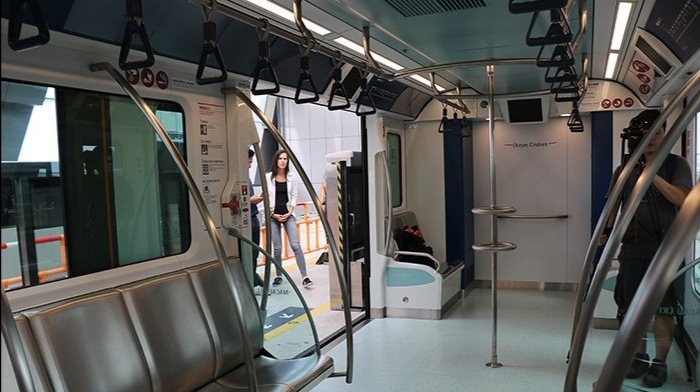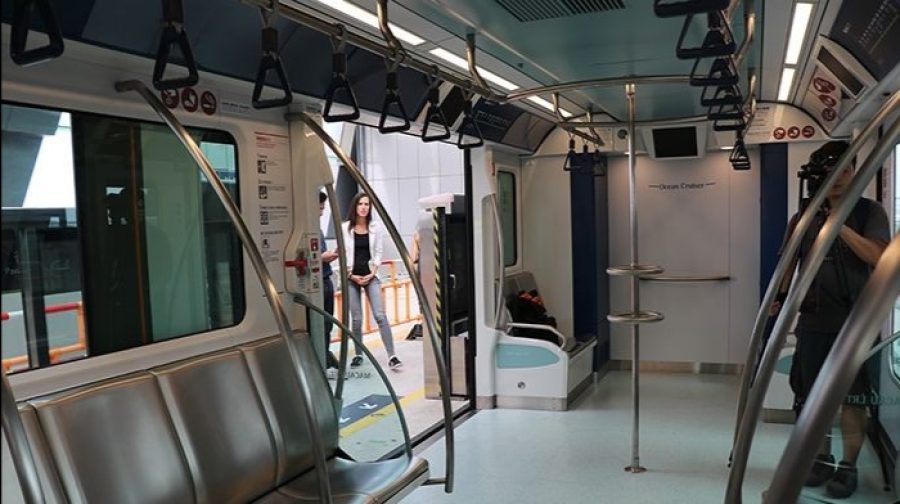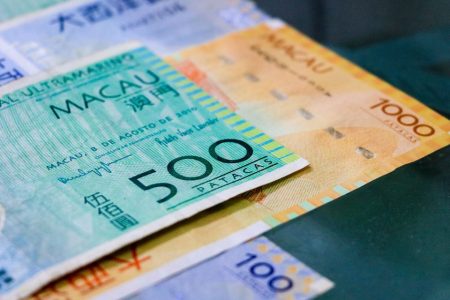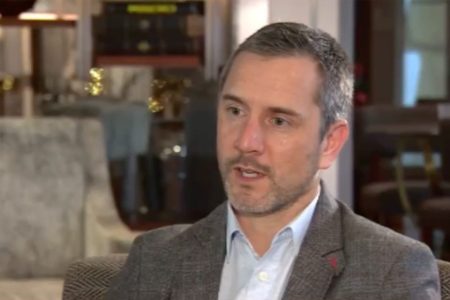Transport Infrastructure Office (GIT) Director Ho Cheong Kei pointed out that a whole one-way trip on the LRT Taipa section takes about 20 minutes during a media trip to the Light Rail Transit (LRT) system on Wednesday.
Ho also said that his office will announce the LRT fare system in the near future. Ho also reaffirmed that the government aims for the Taipa section to come into service before the 20th anniversary of Macau’s return to the motherland on December 20.
Wednesday’s media trip included the LRT Taipa line’s depot in Cotai.
The office organised the media trip yesterday to allow reporters to experience an LRT trip from the Taipa Ferry Terminal station – the eastern terminus of the Taipa section – to the western terminus at Ocean Gardens, before travelling to the depot opposite Wynn Palace.
The Taipa section, which includes Cotai, is 9.3 kilometres long and has 11 stations. The LRT Taipa section will be operated by Hong Kong’s MTR Corporation at least during the first five years. The government has pledged that the total cost of the LRT Taipa section, including the construction, the rolling stock and the setting-up of the system, will not exceed the previously budgeted amount of 11 billion patacas.
On the train, Ho and other LRT officials briefed the reporters on details of the LRT operation, including the designs of the stations in the Taipa section, the system’s visual barrier installed for migratory birds in the Cotai Ecological Zone, and noise barriers installed in the parts near residential buildings.
The Cotai Ecological Zone, covering an area of 55 hectares (0.55 square kilometres), is located on the western waterfront of Cotai near the Lotus Flower Bridge checkpoint.
During Wednesday’s train ride, Ho said that the LRT trains will travel at a maximum speed of 80 kilometres per hour, and when including the time the trains stop at each station, the average speed of the LRT trains is 30 kilometres per hour for a whole one-way trip.
Ho said that in the future LRT operation, each train will normally operate with two carriages, with each carriage having 22 seats and carrying up to 100 passengers – meaning that each train can carry up to 200 passengers. Ho said that depending on the number of passengers in a particular period of time, the operator will arrange for each train to operate with four carriages.
Ho said that his office is aiming for the LRT Taipa section to come into service before the 20th anniversary of Macau’s return to the motherland, which he said is “what everyone wants”. Ho underlined that the fully government-owned LRT company will have to be officially established and start operating before the commencement of the operation of the LRT Taipa section.
The government said earlier this year that the Transport Infrastructure Office will be abolished when the government-owned LRT company is established, adding that the LRT company will then take over the tasks currently conducted by the office – which was established in November 2007 as a government’s “project team” tasked with planning the city’s LRT system and supervising the LRT construction.
According to the Macau Post Daily, Ho also said that his office has made a “basic” decision on how the LRT fare system will operate. Ho said that the LRT fare system will be similar to the city’s public bus fare system – full fare when using a ticket, discounted fare when using a stored-value LRT card. However, the actual LRT fare will depend on the number of stations a passenger takes for a trip – which is different from the public bus fare system which charges a single fare irrespective of the number of bus stop during a passenger’s bus ride.






